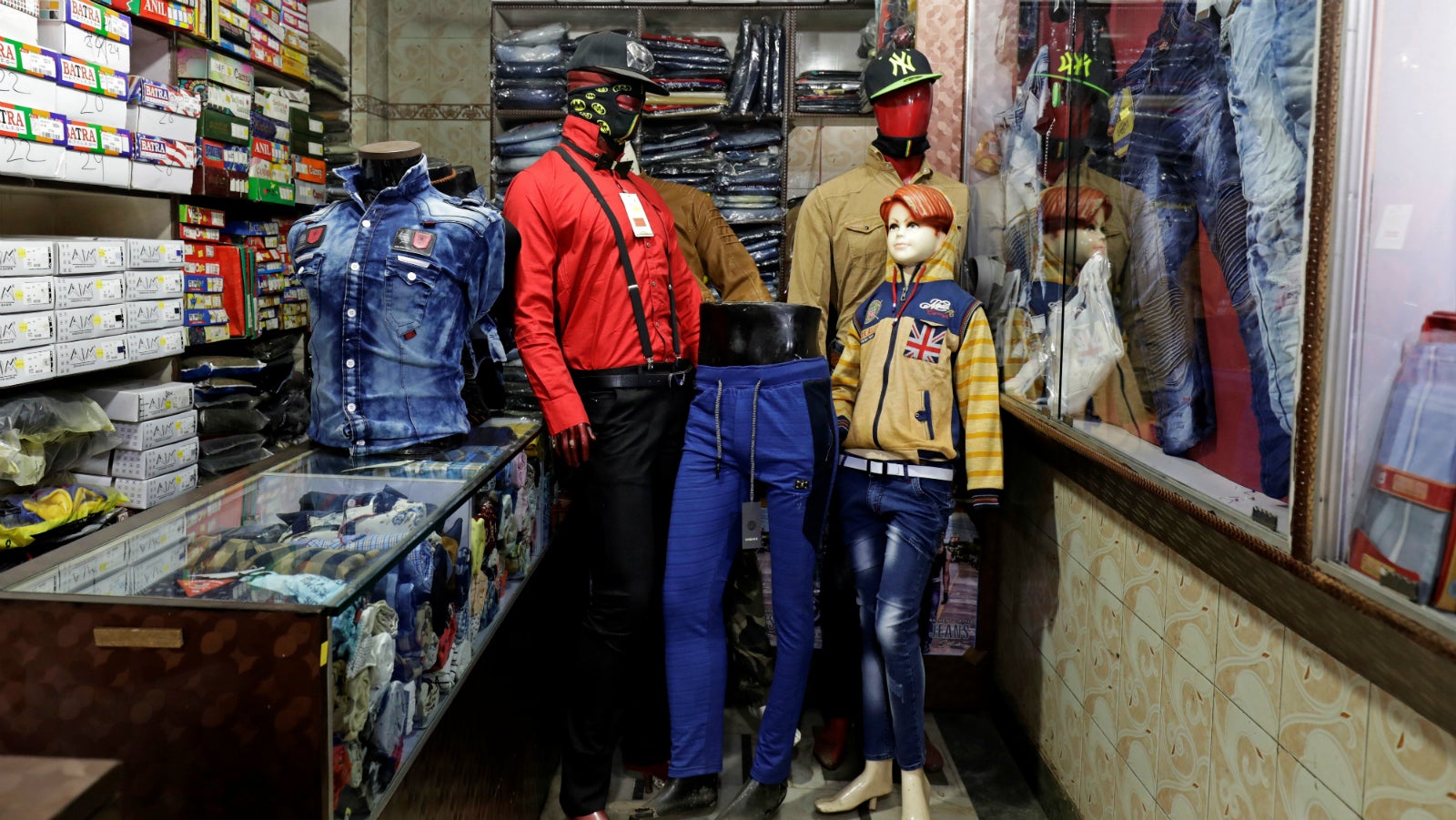Indians can finally look forward to clothes that fit
For years, Indians have forced themselves to wear ill-fitting clothes, only because apparel makers have no standard sizes for body types in the country and depend mostly on western moulds.


For years, Indians have forced themselves to wear ill-fitting clothes, only because apparel makers have no standard sizes for body types in the country and depend mostly on western moulds.
But now, the New Delhi-based National Institute of Fashion Technology (NIFT) plans to end this predicament.
The Indian ministry of textiles, which oversees NIFT, will spend Rs31 crore ($4.7 million) over two years for the institute to hold a national sizing survey to study Indian body types. The project, titled INDIAsize, will help ”develop a comprehensive size chart for the ready-to-wear industry, based on the body measurements of the Indian population,” the Indian government’s press information bureau said on Feb. 28.
INDIAsize will cover 25,000 people aged between 15 and 65 years in six Indian cities, mapping different body types using 3D scanners. The sizes will be in numerical value, involving over 120 “different anthropometric elements, including, height, weight, waist-size, hip-size, and bust-size,” Noopur Anand, a professor at NIFT Delhi, told reporters last week.
Conversations on such a sizing chart have been around for years. In fact, NIFT first proposed the idea in 2006.
With India’s economy growing, so has its urban consumers’ propensity to spend on branded, ready-to-wear clothing. Traditional attires such as the sari and salwar-kameez are usually built for Indian body types or can be tailored easily. However, standardisation in ready-to-wear garments remains a challenge.
S or XL?
Countries like the US, Mexico, the UK, Spain, and China have well-researched sizes for a range of body types. These charts are followed by all major retailers, making consumers’ lives easier.
In India, however, retailers typically use size charts of other countries tweaked for Indian shoppers.
“Unfortunately, there is a lack of formal or certified data which is used by both manufacturers of brands and Indian consumers. Hence brands use their own methodology…to arrive at the fit charts,” said Nagesh C, senior vice-president of design at Pantaloons, which is a part of the Aditya Birla Fashion and Retail.
Some retailers have spent years researching Indian body types. For instance, plus-size clothing brand aLL, part of Future Lifestyle Fashion, works with market insights and customer feedback to develop sizes, Hetal Kotak, the brand’s chief, said.
Sizes in India are mostly generalised—small, medium, or large—and vary across brands. Most foreign brands, on the other hand, stick to their global size charts.
“Or they use sizes from other Asian countries that are nearest to the Indian body type,” said Rajiv Mehta, founder of sportswear brand D-FY, and formerly the head of sporting brand Puma India.
But that’s not enough. For instance, Indians typically are not very tall and not as well-built as their western counterparts, so brands merely adjust their global sizes for Indian shoppers.
And they’ve had just enough of shirts drooping over shoulders and pants constantly slipping down waists.